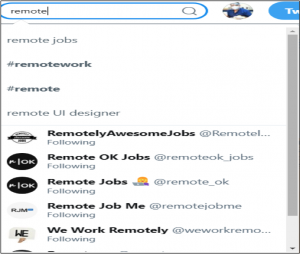Learn Python and Start Your Medical Informatics Freelance Career at Once: Step by Step Guide
Times of economic recession are always hard. You could find everyone around you searching hopelessly for a job. At a certain time, searching for a job may become the main duty for everyone around you. Mega companies are undergoing downsizing, and even old employees are laid off.
At such times, freelancing work could be the only solution. For sure, you can find a place for you in the freelancing job market if you have the talent and even mild experience.
You can find different opportunities on difference freelance websites, some of which are good, long-term and highly paid and some are just a waste of time and effort.
The field of data mining (especially if you have medical informatics or healthcare research domain experience) can be considered an ideal solution if you are searching for a well-paid and stable career with lots of job opportunities available.
Fields of Medical Informatics and Data Mining are considered very promising careers due to the great evolution into big data and the migration to Electronic Medical Records (EMRs).
There is no doubt that Python, PERL and Ruby have a great contribution to the rapid evolution of data science in the last decade.
Learning Python, PERL or Ruby is one of the basic talents needed to enter the world of data science.
If you are currently jobless, do not be desperate. There is always a way and a hope.
All that you need is a strong will and a good plan. If you are not a good planner, you can follow experts’ guidance. This blog is a trial to guide those who are seeking a career build or a career-shift and do not have sufficient funds to join a university and do not have much time to do volunteer or internship work. This blog is for those who want to self-study fast and apply directly what they learned through real-life projects.
I will try to guide you through this blog to build your own freelance career in the field of Medical Informatics.
No work experience is needed. You will build the work experience needed through freelance remote work. Then you can make use of the newly gained experience to start applying for better opportunities may be within mega companies. You should only know programming basics or had some experience with any programming language before.
The guide will be divided into 3 different steps:
- Learn Python (I chose Python, but you can choose Ruby or PERL)
- Register for accounts on the most famous freelance/remote work websites
- Learn what tasks or duties you should search for on different freelance websites (prerequisite for every task will be listed)
Some tasks may require the applicant to know medical terminologies, Health Research Methodologies (HRM) or Evidence Based Medicine (EBM). Readers with Medical/Healthcare research background will gain the most benefit from this blog.
Step 1 – Learn Python
You can learn Python for free and without even leaving your home through different websites. Here are some websites which offer free Python courses for data science:
- Datacamp: Intro to Python Science
- Dataquest: Python Programming: Beginner Course
- Dezyre: Introduction to Data Science in Python
- Microsoft (offered through edx): Introduction to Python for Data Science
- Coursera: Introduction to Data Science in Python
Step 2 – Register for accounts on the most famous freelance/remote work websites
You can find medical informatics short-term jobs or contracts at:
- Upwork
- Freelancer
- People per hour
- Guru
- iFreelance
- Authentic jobs
- Simply Hired
- Freelanced
LinkedIn also contains many Remote jobs, but you have to figure them out yourself as there is not option in the advanced search to filter out remote jobs.
- Remote.co
- We work remotely
- Remote|ok
- Remote work hub
- Stack overflow
Stack overflow contains thousands of jobs for developers. If you are concerned with jobs in the eHealth (Medical Informatics) field, you can use the advanced search feature on the website and use keywords like (health or healthcare). Also, do not forget to check the checkboxes below according to your desire, whether you are searching for remote, visa sponsored jobs or jobs that offer relocation. This methodology yielded 337 results.
Of course, you should do a quick screening and filter them out as the job description may be not appropriate for you or maybe it contains the word “health” as a part of the Health insurance package among the contract.
You can also make jobs chase you instead of searching for them. You can follow some twitter accounts that post remote jobs regularly. Follow the next screenshot and you can retrieve most of those accounts:
Step 3 – Learn what tasks or duties you should search for on different freelance websites
Now, you are ready with your weapon (Python) and you are already in the field. Remaining is to know what to hunt and how to hunt. To know what to hunt, you should be oriented with the common tasks in the medical informatics field.
You should know what recruiters in the field of medical informatics may need or what the job description might include. Job description and needs may include tasks like:
- Data mining, parsing and transforming text files. This might include:
- Paging through large text files.
- Extracting lines that match a regular expression.
- Counting the words in a file.
- Splitting Text into Sentences.
- Extracting phrases.
- Indexing text.
- ZIPF distribution (discrete distribution commonly used in linguistics, insurance, and the modelling of rare events).
- Comparing text files and calculating similarity scores
- Viewing and modifying images. This might include:
- Conversion from one image format to another.
- Plotting graphs from list data.
- Drawing an Image Mashup
- Extracting data from medical databases, participating in systematic reviews and meta-analysis. Candidates with Health Research Methodology (HRM) or Evidence Based Medicine (EBM) domain experience will show excellence here as this might include working and running scripts and algorithms on:
- Medical Subject Headings (MeSH)
- International Classification of Diseases (ICD): Sometimes experience with ICD-O (Oncology) may be needed.
- The Cancer Surveillance, Epidemiology and End Results program (SEER).
- OMIM (The Online Mendelian Inheritance in Man). Some queries may be needed to:
- Collecting the OMIM Entry Term.
- Finding Inherited Cancer Conditions.
- PubMed (Medline). Some common tasks related to PubMed may include:
- Building a database including published researches in a specific field and screening out doubles and redundant researches.
- Downloading Gene or Protein synonyms
- Using Python scripts also can help in the field of Taxonomy. Here are some of the common tasks you might be asked to do:
- Finding the Restricted Classes of Human Infectious Pathogens
- Scanning the Literature for Candidate Terms
- Adding Terms to the Neoplasm Classification
- The Centers for Disease Control and Prevention (CDC)contain huge databases including death certificates data. You can be asked for example to count number of records based on a specific cause of death.
- US Census files include data about total population (geographical and age distribution). Different queries may be requested from you like determining age distribution in a specific area.
- There are many different general tasks which you may be asked to do, like:
- Text scrubbing
- Webpage grapping
- Deidentifying confidential data
- Image Annotation
- Conversion from Digital Imaging and Communications in Medicine (DICOM) to JPEG. (Knowing about DICOM and how to deal with DICOM files is very important and will increase your chances of finding a suitable job).
- Visualizing Resource Description Framework (RDF) schema with GraphViz (an open source graph visualization software used to represent structural information as diagrams of abstract graphs and networks).
You can find a lot of ready-made algorithms and scripts on the internet or in professional books. One of the best books which gathered and listed different Python/Perl/Ruby scripts and algorithms in the field of Medical Informatics is “Methods in Medical Informatics: Fundamentals of Healthcare Programming in Perl, Python, and Ruby (Chapman & Hall/CRC Mathematical and Computational Biology) 1st Edition by Jules J. Berman (Author)”.
As a beginner, you can find difficulty in dealing with non-structured and non-clean data. You may need clean data to train yourself as this will also save a lot of your time.
The best place where you can find clean data is at John Snow Labs, where you can find a paid service to download different datasets (clean data) which you will need in your new career (like CDC, SEER, OMIM, US Census, HL7 messages, ICD and many others). Any other clean datasets could be available upon request by just scheduling a call.
As you develop your skills in medical informatics, consider exploring the impact of Generative AI in Healthcare and the role of a Healthcare Chatbot in improving patient interactions. These innovations can enhance your freelance opportunities and provide valuable insights into the evolving healthcare landscape.
































